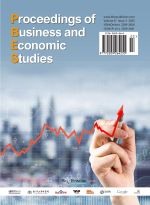Abstract
Objective: Existing research mainly relies on quantitative indicators. However, the subjectivity of qualitative indicators and the problem of their difficulty in quantification limit the comprehensiveness of evaluation. Therefore, a resilience supplier evaluation method based on the improved Z-number-ORESTE is proposed. Methods: Through the construction of a multi-tiered evaluation index system incorporating supplier capabilities, resources, strategic aspects, and resilience, Z-numbers are harnessed to signify qualitative indicators. An advanced Z-number distance metric is implemented, meticulously considering the impact exerted by the reliability portion of Z-numbers on information risk. The refined ORESTE ranking algorithm introduces the concepts of strong and weak orderings and capitalizes on the Borda assignment function. This approach facilitates a more precise appraisal of the performance of alternative solutions. By amalgamating the improved Z-number distance measurement approach with the ORESTE ranking methodology for multi-attribute decision-making, it becomes feasible to more efficiently assess the recovery capacities and adaptability of suppliers in the face of unforeseen incidents and risks. Results: Through the analysis of the comprehensive performance of the existing suppliers of a certain electronics enterprise, the results regarding the suppliers’ recovery capabilities and adaptability when facing unexpected events and risks are obtained. Eventually, the suppliers that are in line with the long-term development strategy of the enterprise are selected. Conclusion: This evaluation system has verified its feasibility and effectiveness. Moreover, the system is capable of effectively identifying and selecting resilient suppliers, providing more reliable decision-making support for the enterprise’s supply chain management.
References
Nazari-Shirkouhi S, Tavakoli M, Govindan K, et al., 2023, A Hybrid Approach Using Z-Number DEA Model and Artificial Neural Network for Resilient Supplier Selection. Expert Systems with Applications, 222: 119746.
Gökler SH, Boran S, 2023, A Novel Resilient and Sustainable Supplier Selection Model Based on D-AHP and DEMATEL Methods. Journal of Engineering Research, 2023: 57–67.
Davoudabadi R, Mousavi SM, Mohagheghi V, et al., 2019, Resilient Supplier Selection Through Introducing a New Interval-Valued Intuitionistic Fuzzy Evaluation and Decision-Making Framework. Arabian Journal for Science and Engineering, 44: 7351–7360.
Mahmudul Hassan M, Jiang D, Sharif Ullah AMM, 2019, Resilient Supplier Selection in Logistics 4.0 With Heterogeneous Information. Expert Systems with Applications, 2019: 1–50.
Fallahpour A, Nayeri S, Sheikhalishahi M, et al., 2021, A Hyper-Hybrid Fuzzy Decision-Making Framework for the Sustainable-Resilient Supplier Selection Problem: A Case Study of Malaysian Palm Oil Industry. Environmental Science and Pollution Research, 2021: 1–21.
Abedian M, Saghafinia A, Hejazi M, 2023, A Fuzzy Analysis Approach to Green-Resilient Supplier Selection in Electronic Manufacturing Systems. Cybernetics and Systems, 54(5): 577–603.
Wang J, Cao Y, Zhang H, 2017, Multi-Criteria Decision-Making Method Based on Distance Measure and Choquet Integral for Linguistic Z-Numbers. Cognitive Computation, 9: 827–842.
Aliev RA, Pedrycz W, Huseynov OH, et al., 2016, Approximate Reasoning on a Basis of Z-Number-Valued If–Then Rules. IEEE Transactions on Fuzzy Systems, 25(6): 1589–1600.
Yaakob AM, Serguieva A, Gegov A, 2016, FN-TOPSIS: Fuzzy Networks for Ranking Traded Equities. IEEE Transactions on Fuzzy Systems, 25(2): 315–332.
Qiu D, Dong R, Chen S, et al., 2017, On an Optimization Method Based on Z-Numbers and the Multi-Objective Evolutionary Algorithm. Intelligent Automation & Soft Computing, 2017: 1–4.
Shen K, Wang X, Wang J, 2019, Multi-Criteria Decision-Making Method Based on Smallest Enclosing Circle in Incompletely Reliable Information Environment. Computers & Industrial Engineering, 130: 1–13.
Das S, Garg A, Pal SK, et al., 2019, A Weighted Similarity Measure Between Z-Numbers and Bow-Tie Quantification. IEEE Transactions on Fuzzy Systems, 28(9): 2131–2142.
Cheng R, Zhang J, Kang B, 2022, A Novel Z-TOPSIS Method Based on Improved Distance Measure of Z-Numbers. International Journal of Fuzzy Systems, 24(6): 2813–2830.
Jia Q, Hu J, 2022, A Novel Method to Research Linguistic Uncertain Z-Numbers. Information Sciences, 586: 41–58.
Shen K, Wang J, 2018, Z-VIKOR Method Based on a New Comprehensive Weighted Distance Measure of Z-Number and Its Application. IEEE Transactions on Fuzzy Systems, 26(6): 3232–3245.
Chen M, Shen K, 2024, Risk Prioritization by Z-VIKOR Method Under Incomplete Reliable Information and Its Application in CCUS Project Site Selection. Applied Soft Computing, 154: 111357.
Haldar A, Ray A, Banerjee D, et al., 2014, Resilient Supplier Selection Under a Fuzzy Environment. International Journal of Management Science and Engineering Management, 9(2): 147–156.
Sahu AK, Datta S, Mahapatra SS, 2016, Evaluation and Selection of Resilient Suppliers in Fuzzy Environment: Exploration of Fuzzy-VIKOR. Benchmarking: An International Journal, 23(3): 651–673.
Wang L, Li W, Wang H, 2024, Improved Probability Language ORESTE Staffing Matching Decision-Making Method. Computer Engineering, 50(12): 407–416. DOI: 10.19678/j.issn.1000-3428.0068853.
